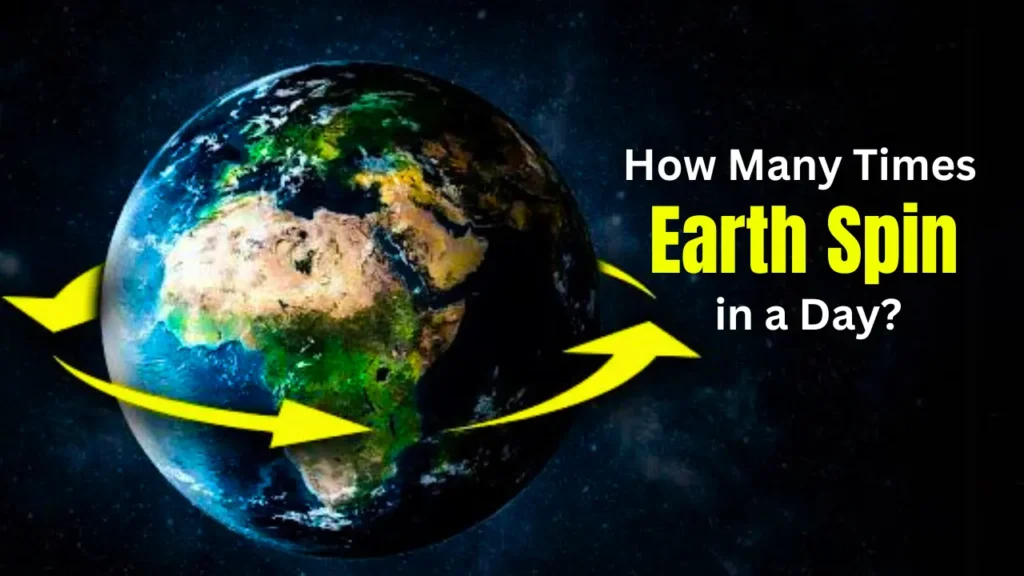
Have you ever wondered about the mesmerizing dance our planet performs every day? The Earth, our home, is not just a static sphere in space; it’s a dynamic entity in constant motion. One of the most fascinating aspects of Earth’s movement is its rotation. In this article, we’ll explore the intriguing question: How many times does the Earth spin in a day?
Understanding Earth’s Rotation
To comprehend the Earth’s rotation, let’s start with the basics. Earth completes a full rotation around its axis once every 24 hours. This rotation is responsible for the day-night cycle we experience. The Earth spins from west to east, and this axial rotation gives us the illusion of the sun rising in the east and setting in the west.
The Speed when Earth spin
Now, let’s talk numbers. The circumference of the Earth at the equator is approximately 40,075 kilometers (24,901 miles). In other words, on average, the speed of Earth’s rotation at the equator is about 1670 kilometers per hour (1037 miles per hour). However, as you move toward the poles, the rotation speed decreases, approaching zero at the poles themselves.
Calculating the Number of Rotations in a Day
To determine how many times the Earth spins in a day, we must select the number of rotations per hour and then multiply that by the total number of hours.
At the equator, the Earth completes one full rotation every 24 hours. So, to find the number of rotations per hour, we can use the simple formula:
Number of rotations per hour = 1 rotation / 24 hours
This gives us approximately 0.0417 rotations per hour. Now, to find the number of rotations in a day, we multiply this value by 24:
Number of rotations in a day = 0.0417 rotations per hour * 24 hours = 1 rotation
So, the Earth completes one full rotation on its axis every 24 hours.
The Impact on Daily Life When Earth Spin
The Earth’s rotation profoundly affects our daily lives, influencing everything from weather patterns to time. The rotation of the Earth creates the cycle of day and night, controlling our sleep patterns and the activities we engage in during different parts of the day.
Additionally, the Coriolis effect, a result of the Earth’s rotation, influences the direction of ocean currents and wind patterns. This direction of ocean currents and wind patterns, in turn, affects climate and weather systems across the globe. Understanding the Earth’s rotation is essential for meteorologists, pilots, and sailors, as it plays a crucial role in predicting and navigating weather patterns.
The Role of Earth’s Tilt
While we’ve established that the Earth completes one full rotation every 24 hours, it’s important to note that the planet’s axis is tilted at approximately 23.5 degrees. This tilt, in turn, is responsible for the changing seasons as different parts of the Earth receive dissimilar amounts of sunlight throughout the year.
The Earth’s tilt adds complexity to its rotation, creating the solstices and equinoxes that mark the transition between seasons. This axial tilt, combined with the Earth’s orbit around the sun, gives rise to the beautiful and diverse climates we observe on our planet.
Conclusion
In conclusion, the Earth’s rotation is a fundamental aspect of our daily existence, shaping everything from the sun’s rising and setting to the patterns of our weather. While the Earth completes one full rotation every 24 hours, the impact of this rotation is far-reaching and influences various aspects of life on our planet.
So, the next time you marvel at a sunrise or stargaze under the night sky, remember that you are witnessing the Earth’s continuous and graceful dance in the vast cosmic ballet.
Also Read:
FAQs:
How many times does the earth spin in a day?
In one day, Earth makes one rotation on its axis.
Could humans survive if the Earth stopped spinning?
No.